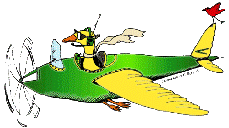Bird Strike Committee Proceedings
Date of this Version
October 2002
Document Type
Article
Abstract
Brazil built one of the world’s largest aeronautical infrastructures. The airport net is distributed along its vast territory, which shows a tremendous ecosystem variety. Having a large civilian aircraft fleet and also running second after Venezuela in catalogued bird species, Brazil has had problems related to bird strikes. Nevertheless, Brazil is made up of 26 States plus the Federal District. Thus, besides the Union Government, each state holds its own government structure. The states are divided into counties that also have their own administrative structure. The jurisdiction of each level of government is established by the Federal Constitution, laws and others legal acts. Therefore, solutions for bird strike hazards, whose root causes are spread into all three government levels, encompass many institutions and require an orchestrated co-ordination. The paper comments on aspects of the lead role played by CENIPA, the main organization of the Brazilian flight safety system, to keep the avian hazard under control in Brazil. Among others, the following measures are considered in the paper: a) the organization and outcomes of the first national meeting about bird strike hazard control last year; b) the issue of experts report showing agreement or not, by the aeronautical authority, with the establishment of potential bird attractive activities in the vicinities of airports; c) the management and application of the national bird strike database; and d) the elaboration of an avian hazard control manual to be used by airports administrators, aircraft operators, waste facilities managers and mayors.


